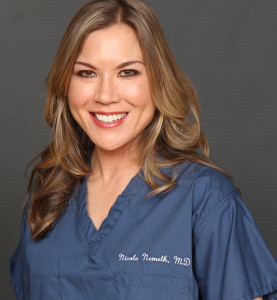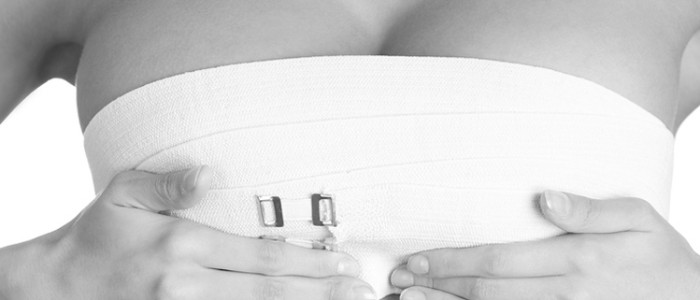Using body fat for breast reconstruction or enhancement.
Fat. Most people think of it as something they have to get rid of. But in the world of plastic surgery, fat is something that can be put to good use — particularly for women who have undergone procedures for breast cancer — through fat grafting.
According to Dr. Nicole Nemeth, a board-certified plastic surgeon and a member of the NAPBC-accredited Comprehensive Breast Care Center at New York- Presbyterian/Lawrence Hospital in Bronxville, “Fat grafting is a surgical technique where a patient’s own fat is removed via liposuction from one area of the body (a donor site) to reconstruct or enhance another body part.”

The Comprehensive Breast Care Center at New York Presbyterian/Lawrence offers Westchester County residents a full range of state-of-the-art services, which includes a multidisciplinary team approach to coordinate the most effective treatment options for each patient. “For example,” says Dr. Nemeth, “the plastic surgeon will work closely with the patient’s breast surgeon and oncology team to ensure the best reconstruction results are achieved.”
Fat grafting can be used in breast reconstructive surgery as an adjunct to an implant-based reconstruction after mastectomy. Small layers of fat can smooth out contour deformities or volume differences, creating a softer, more natural appearance to the breast shape. One of the main benefits of the procedure is that the person’s own body fat is used, so there is no risk of an allergic reaction or rejection. The most common areas from which fat is removed are the abdomen, flanks, hips, thighs and arms — areas where extra fat is usually unwanted anyway, thus an added bonus. “The fat can then be applied to any area of the body in need of soft tissue volume, such as the breasts, face and buttocks,” says Dr. Nemeth.
Fat grafting is a procedure for both reconstructive and cosmetic cases, making any patient a potential candidate. Says Dr. Nemeth, “Optimally, the patient should be in overall good health and have realistic expectations. In the case of women who have been treated for breast cancer, medical clearance is necessary in order to undergo surgery.” In the hands of an experienced, board-certified plastic surgeon who is familiar with the technique, fat grafting is generally safe and effective, but like all medical procedures, there are some risks. “The most common adverse effects include some bruising and swelling. Under- correction or loss of volume is also a risk that may require further fat grafting procedures for a lasting re- sult. Infection or more serious complications can occur but are rare,” says Dr. Nemeth.
As fat grafting is used to enhance the appearance of a body part, there is a strong emotional component for the patient as well and several procedures may be necessary to achieve the desired effect. Says Dr. Ne- meth, “As long as there are sufficient donor sites for fat harvest, the procedure can be repeated. The majority of patients, however, will see an improvement after just one session.”
Liposuction and fat grafting use small incisions, making them fairly well tolerated with minimal recovery time. “The first three days are generally the most uncomfortable, and any bruising usually resolves by two weeks,” says Dr. Nemeth. “The full result can be first seen about three months after surgery.”
Continued research and long-term follow-up will determine the safety and effectiveness of fat grafting alone to reconstruct a full breast mound after mastectomy. Until then, the gold-standard approach to breast reconstruction without an implant is through the use of vascularized fat and skin from the abdomen, called the TRAM flap. “With microsurgical techniques, the plastic surgeon can now transfer the needed skin and fat without sacrificing the abdominal musculature in many cases,” says Dr. Nemeth. “As the techniques for reconstruction continue to become more refined, we can deliver better results.”
Story by Barbara Moroch
August 12, 2015
source: lohud.com

Comments are closed.